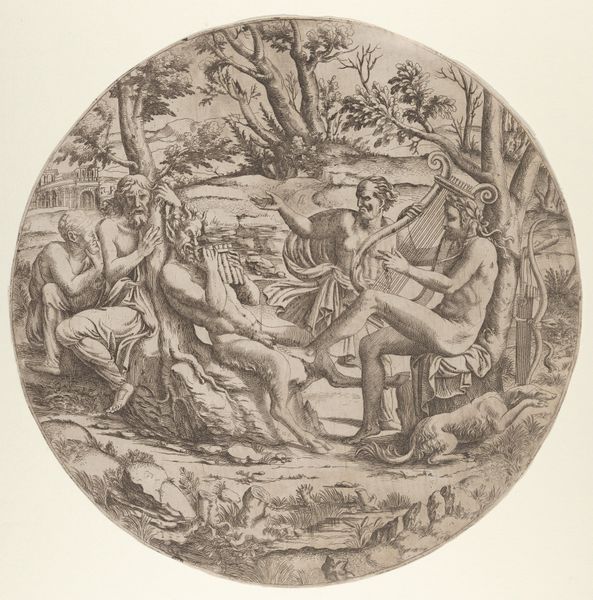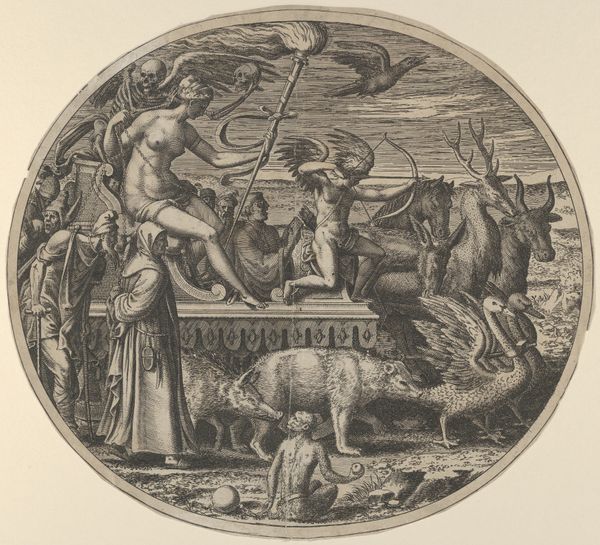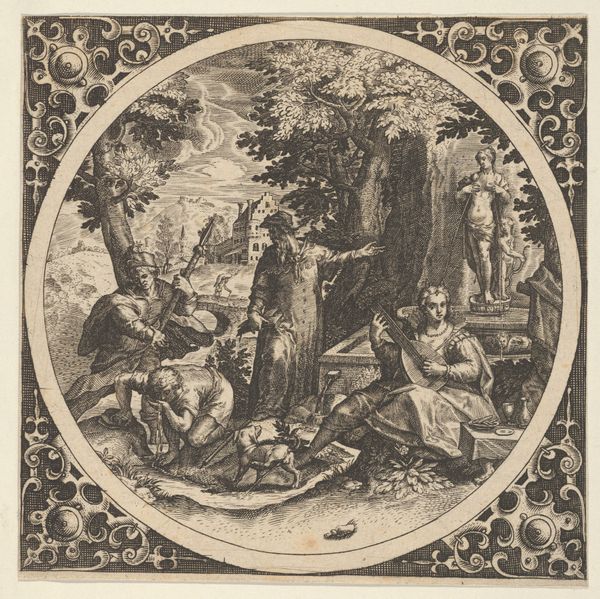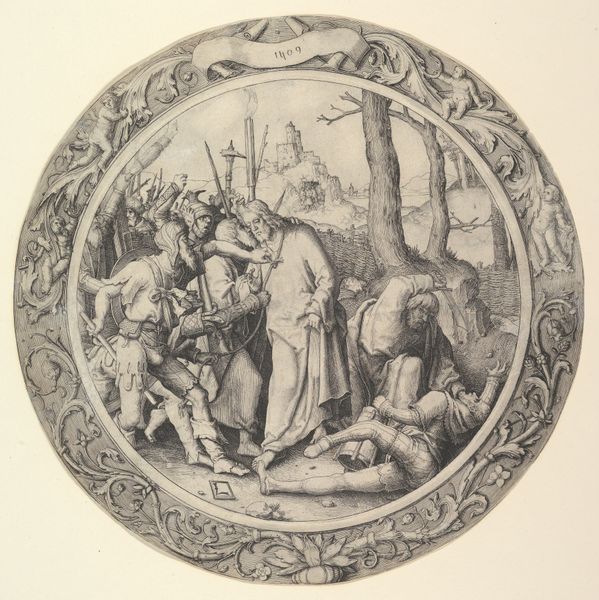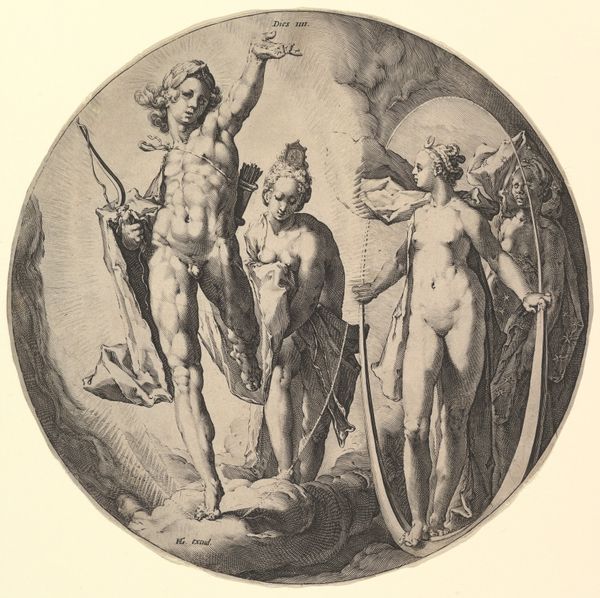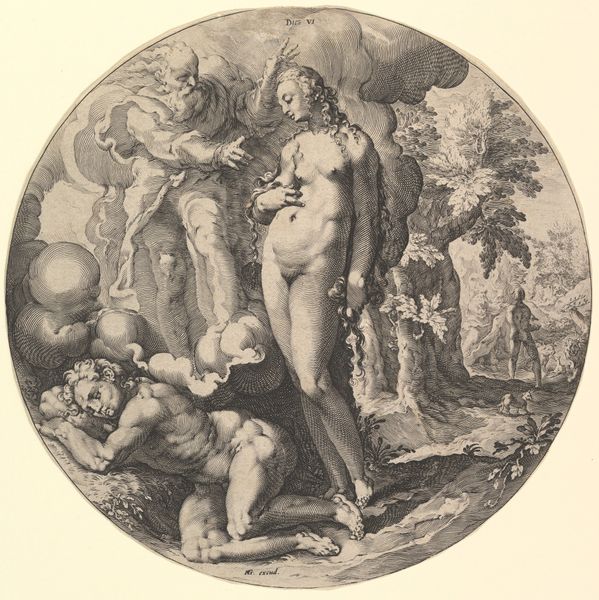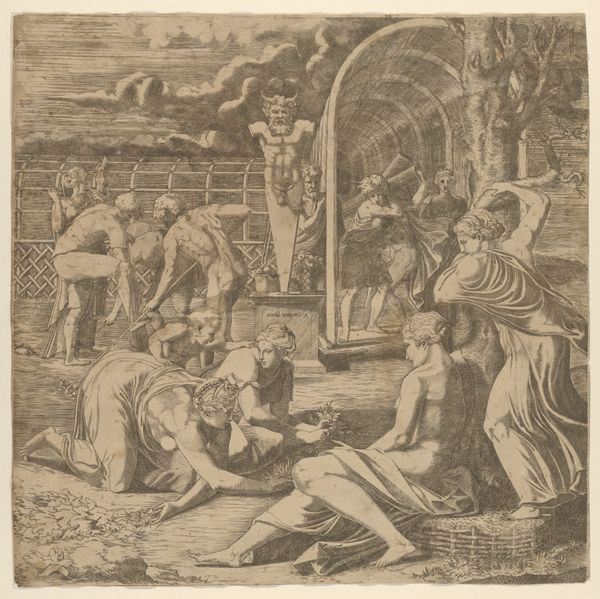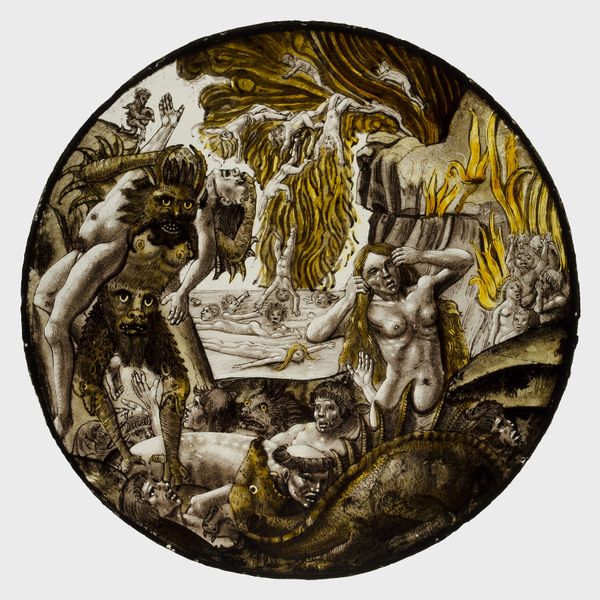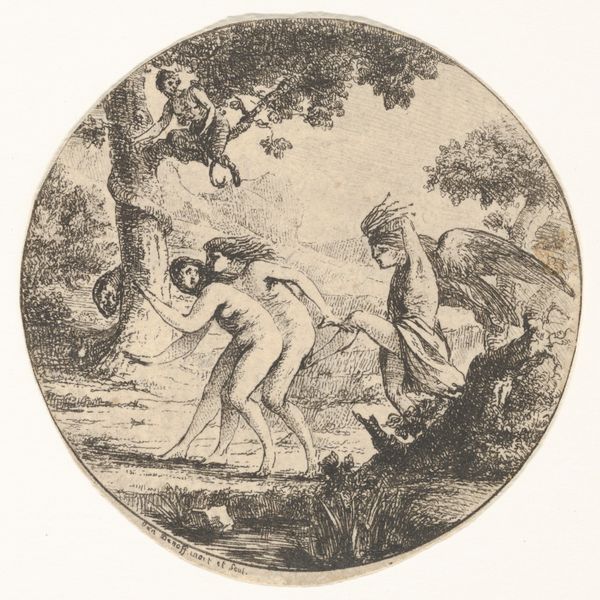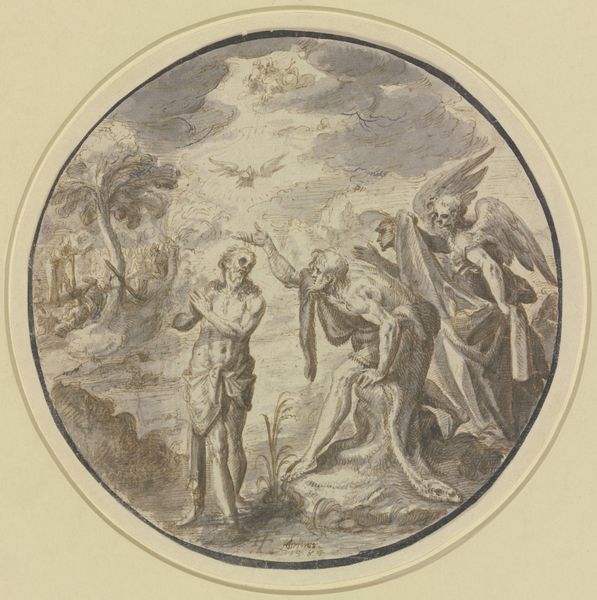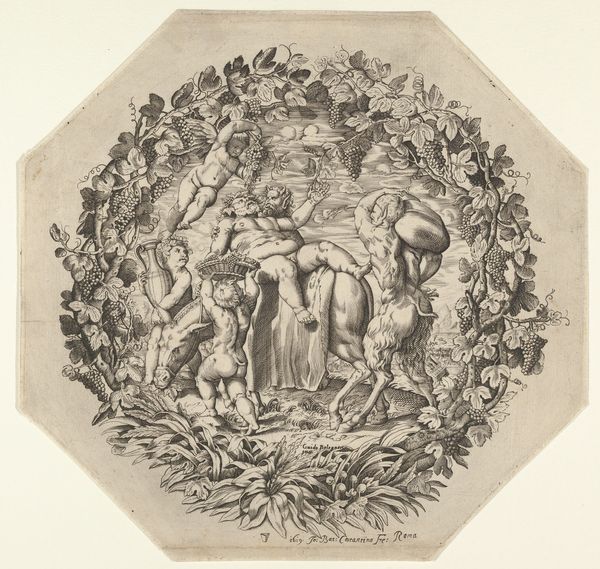
print, ink, engraving
#
ink drawing
#
allegory
# print
#
landscape
#
figuration
#
11_renaissance
#
ink
#
history-painting
#
italian-renaissance
#
nude
#
engraving
Dimensions: diameter (trimmed to borderline, with part of image lost at upper right): 19.6 cm (7 11/16 in.)
Copyright: National Gallery of Art: CC0 1.0
Abraham de Bruyn made this print, *Diana and Her Nymphs in a Garden*, sometime in the late 16th century. It’s an engraving, meaning that the design was incised into a copper plate, inked, and then printed onto paper. Look closely, and you’ll notice the subtle gradations of tone and very fine lines that build up the image. These are the result of a skilled hand manipulating a tool called a burin. The engraver would have used this to carefully cut into the metal, allowing for precise control and intricate detail. The process of engraving demanded considerable labor, skill, and time. Each print was the result of a collaboration between artist and the printmaker. As the market for prints expanded, these artisans played a crucial role in disseminating images and ideas across Europe. The rise of printmaking reflects the growing forces of commercialization and mass production that characterized the early modern period.
Comments
No comments
Be the first to comment and join the conversation on the ultimate creative platform.
